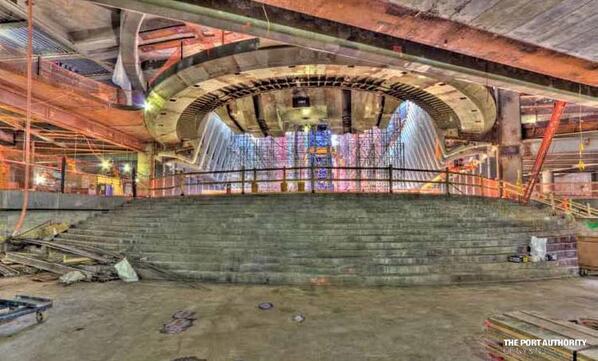
The inherent contradictions in New York City’s approach to and embrace of transit are at their peak on Staten Island. The borough’s residents and politicians clamor for better transit. They want subways to span the harbor or the narrows; they want easier access and more reliable service. What they don’t want though apparently are incremental and easy-to-implement changes to the bus network that prioritizes road space at the expense of drivers. Anything but that.
The trouble, as we well know, started with Select Bus Service. The MTA and DOT worked to bring their baby to Hylan Boulevard. Dedicated bus lanes and some pre-boarding payment options along with, eventually, signal prioritization have led to faster buses and satisfied customers. The system has its flaws, and it shouldn’t be confused with bus rapid transit. But it’s working. The city’s notoriously slow and unreliable buses are getting faster.
Certain elements of Staten Island though aren’t happy. With the debut of camera enforcement earlier this summer, complaints skyrocketed. Earlier, Staten Island politicians had been responsible for a successful drive to convince the MTA to turn off SBS’ hallmark blue lights, and during Tom Prendergast’s confirmation hearings, Sen. Andrew Lanza went on a six-minute rant on Select Bus Service and the lack of space for cars. A few days later, Nicole Malliotakis bashed camera enforcement as a violation of civil liberties. All of this over a bus lane that’s designed to speed up travel for the masses.
Now, though, it seems as though the complaints are working. As the Staten Island Advance reported this week, DOT may change some rules regarding the SBS system on Hylan Boulevard. Michael Sedon reported:
In response to claims people have been unfairly ticketed by some Select Bus Service lane cameras on Staten Island, the city Department of Transportation is considering changing the rule slightly to better reflect reality. Instead of making the next immediate right-hand turn after entering the dreaded red bus lane — the current rule — motorists may be allowed to make a right-hand turn within 200 feet of entering the bus lane. “A vehicle may not be operated in the bus lane during restricted hours for more than one block or two hundred feet, whichever is less,” is the proposed amendment that the DOT discussed at a 10 a.m. meeting Wednesday.
The DOT confirmed that they took public comments Wednesday morning and have received written comments and will consider both as it “proceeds with the proposed rule amendments,” a spokesman said.
The possible change of heart came after local officials cited a Signature Bank in Grant City, just past Hunter Avenue on Hylan Boulevard, where bank customers were receiving tickets for turning into the bank’s parking lot, and on Richmond Avenue in New Springville, where motorists were being ticketed for not turning into a private parking lot near the next available intersection, which doesn’t occur until Platinum Avenue.
The bank’s parking lot has been a flash point in the debate over the bus lane. Politicians claim there isn’t enough space in between the turn for the bank and the turn for the private lot, and a few people who have gotten tickets have raised a ruckus. If it’s a safety issue unique to this intersection, I’m not going to argue against a change, but I can’t help but think that the NIMBYs are at it again.
Time and time again, we see transit improvements rolled back because a loud minority makes a stand. Along 34th St., there is no transitway because a handful of people were concerned about door-to-door access to their apartment buildings. On 125th St., buses are backed up from river to river because a few parking spots would have been taken away. It’s noble that DOT and the MTA involve the community and seek guidance and support from Community Boards, homes to some of the city’s most crotchety and progress-shy people, but at a certain point, the experts should be allowed to do their jobs. Progress is slow, and progress can be painful.
It involves recognizes priorities and learning that the thing you want isn’t the thing that’s best for everyone else who lives around you. When it comes to transit planning, New York City has a long way to go even though the city was built with a transit backbone that in no small way powers the entire city.

 With an extra week in between episodes this time around thanks to some scheduling conflicts on my part, Second Ave’ Sagas’ podcast “The Next Stop Is…” returns with an all-new session for your enjoyment this week. On episode five of the series, Eric Brasure and I tackle a variety of subjects. We start with a discussion on the troubles
With an extra week in between episodes this time around thanks to some scheduling conflicts on my part, Second Ave’ Sagas’ podcast “The Next Stop Is…” returns with an all-new session for your enjoyment this week. On episode five of the series, Eric Brasure and I tackle a variety of subjects. We start with a discussion on the troubles 

